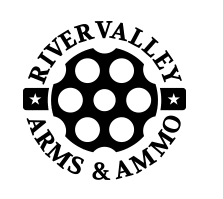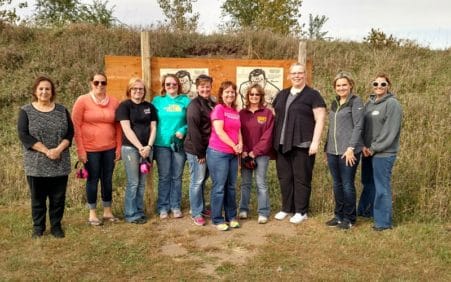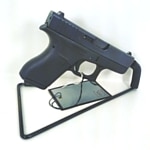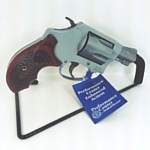How to Buy Your First Handgun in Minnesota
Buying your first gun is exciting but it can be intimidating. Here are a few things to consider when you’re a first time firearm purchaser looking at getting a handgun in Minnesota.
Purpose
Decisions, decisions, decisions. There are so many different options when choosing a firearm that works well for you but there are a few things that are more important than others.
So first thing’s first, what are you planning to use the firearm for? Of course to shoot things but are you planning on just using it for fun shooting, personal protection, or concealed carry? Each answer gives you different things to look for.
Fun Shooting
If you’re looking for something to use for fun shooting, you’ll likely want to go with a larger handgun – that’s larger in size, not larger in caliber. It seems counter intuitive but the larger and heavier the firearm the less felt recoil you’ll have because the firearm absorbs some of the felt recoil. Conversely, the smaller and lighter the firearm, the more felt recoil you have because your body must absorb the recoil.
Personal Protection
If you’re looking for something to use for personal protection, that could go one of two ways – it’s dependent upon whether you will use it primarily for concealed carry or if you will primarily use it for home protection.
Concealed Carry
If you’re looking for a firearm for concealed carry, you’ll likely want something that’s light and small so you’ll actually carry it. If it’s light and small, it will be easy to conceal and keep concealed and you’ll also be willing to carry it more versus a heavier firearm that will weigh on you throughout the day.
Home Protection
A firearm for home protection allows you a little more freedom in your choice. You can have a larger firearm because you won’t necessarily be carrying it on your person. A shotgun is a good option for home defense but if you’d feel more comfortable with a handgun, it’s nice to have a larger handgun for several reasons.
A double stack handgun will allow you to carry more ammunition – I don’t think we need to explain the benefits of that! There are also many options for double stack handguns that have a rail on them – a rail would allow you to use a weapons light on your firearm. One of the best tools for personal defense is a good light. It only takes 120 lumens to temporarily disorient an attacker. Many weapons lights are significantly higher than that – the one I have on my personal home protection firearm is 600 lumens and it has a strobe feature.
Semi-auto vs. Revolver
Definition: Semi-Auto Firearm: “A semi-automatic, or self-loading, firearm is one that performs all steps necessary to prepare it to discharge again after firing—assuming cartridges remain in the firearm’s feed device. Typically, this includes extracting and ejecting the spent cartridge case from the firing chamber, re-cocking the firing mechanism, and loading a new cartridge into the firing chamber. Although machine guns and selective-fire firearms do the same tasks, semi-automatic firearms do not automatically fire an additional round until the trigger is released and re-pressed by the person discharging it. That is, a semi-automatic firearm fires only one round (bullet) each time the trigger is pulled.” [Source: Wikipedia]
Definition: Revolver: “A revolver is a repeating firearm that has a revolving cylinder containing multiple chambers and at least one barrel for firing.” [Source: Wikipedia}
There are many benefits and downfalls to both platforms so how do you know which one is right for you? Here are some things to consider when you’re choosing between a semi-auto firearm or a revolver.
[one_half]
Semi-Auto
- Generally have higher capacity
- Generally are thinner
- Generally are lighter
- More moving parts means it may be more likely to have jamming issues
- Can have feeding issues
- A variety of models offer the option of a safety, should you choose to have one
[/one_half]
[one_half_last]
Revolver
- More mechanically simplistic thus, less likely to have jamming issues
- Generally don’t have a safety (which can be either a positive or a negative)
- Can be heavier so the shooter may have less felt recoil
[/one_half_last]
Caliber
You need different tools for different jobs and determining which caliber is the right one for you is no different.
22LR (Long Rifle) for Fun Shooting and Beginners
If you’re just getting started or you’re looking for something that’s cost effective to play around with, you may want to consider 22LR. A 22LR has minimal amounts of recoil which will allow a new shooter to focus on developing safe, well-rounded shooting skills without having to worry about the BANG. Though the cost has gone up and availability for 22LR rounds has been more scarce than it ever has before, 22LR is still one of the most purchased, most affordable, and widely used calibers.
380ACP for Personal Protection
If you’re looking for a small, concealable firearm for concealed carry, you’ll likely consider a 380 at some point. Many micro pistols are chambered in 380. It’s like a 9mm with a shorter casing. They’re generally not great firearms for fun shooters because there is a substantial amount of felt recoil but they are a decent round for personal protection. As Clint from Thunder Ranch always says, “The gun that’s with you is better than the gun that’s at home in the safe,” and a 380 will likely be small enough and light enough for a person to want to carry all day, every day. Though it’s not as affordable as 9mm, it’s still readily available and decently priced.
9mm for Fun Shooting, Personal Protection and Home Defense
If you’re looking for something with a little recoil, (because let’s face it, it’s more fun to shoot something with a little bang!) you will likely consider a 9mm. Firearms chambered in 9mm come in a variety of shapes and sizes which makes them so versatile. This is likely the most popular caliber for handguns next to the 22LR and it’s very affordable.
.40 for Personal Defense and Home Defense
Ballistically, .40 is the best caliber for personal defense and home defense because it has the best stopping power. There’s been a number of ballistics tests performed with a variety of ammunition that shows that .40 has the largest secondary wound tract and has just the right amount of penetration to stop a threat the most effectively. It does pack a decent amount of recoil that beginners may not enjoy and it is a little more costly to shoot.
.45 for Fun Shooting
It stands to reason that as far as stopping power goes, if 9mm is better than 380 and 40 is better than 9mm, then 45 is better than 40, right? Not necessarily. Ballistically, .45 is too powerful and therefore does not have better stopping power than the .40 caliber. For this reason, we typically don’t recommend .45 for personal defense or home defense. However, the .45 caliber is great for fun shooting as it is one of the more common calibers in the 1911 platform. Often times, new shooters are intimidated by larger calibers but it can be enjoyable with the right ear protection and the right firearm. It doesn’t have as much recoil as you would think when you partner the .45 round with a 1911 platform handgun.
38 Special for Personal Protection and Fun Shooting
38 Special is very common, excellent caliber if you’re considering a revolver. It is the most common revolver caliber. Depending on the firearm, there is a little more felt recoil than a 9mm but that can be controlled by the proper grip and stance. 38 Special is also a great caliber for fun shooting though it is more expensive than 9mm.
410 for Home Defense and Concealed Carry
410 is a shotgun round but there are a number of personal defense revolvers that allow for 410 to be fired through them. This would be a great personal defense option as you can get ammunition that has discs and bbs in them with great stopping power. It is generally higher cost for the ammunition and there is a substantial amount of recoil so it’s maybe not the best choice for a fun shooter.
Other Calibers for Consideration
There are a number of other calibers that are less common that could be good options for you as well. I certainly wouldn’t limit myself to the calibers mentioned above but they are the more common calibers.
What You Need to Purchase
Here’s what you’ll need when you decide what you want to purchase:
- Driver’s License
- Permit to Purchase or Permit to Carry
You also need to be 21 to purchase a handgun. Anyone over 18 can purchase a shotgun or a rifle but in order to purchase a handgun, you’ll need to be 21.
If you don’ t have your permit to purchase or your permit to carry yet, you may want to check out this article on Getting Your Permit to Purchase or Permit to Carry.
The Process
Deciding which firearm you want to purchase is the hard part. Don’t be afraid to ask to handle the firearms because that’s how you determine what is a good fit for you. No two people are the same so make sure you find something that you like and that fits you well. What I like is going to be different than what my husband likes and what my husband likes is going to be different than what his friend likes ect. If you want to learn more about the proper etiquette for handling firearms in a gun shop, check out this other article on Gun Shop Etiquette.
Once you decide which firearm you want to purchase, there are several steps before you can walk out the door with your firearm.
- If you’re purchasing a handgun, you’ll need to have your Permit to Purchase or Permit to Carry. If you don’t have yours, you can learn about that process in this other article on Getting Your Permit to Purchase or Permit to Carry. The gun shop you’re purchasing from will need a copy of your Permit to Purchase.
- The gun shop you’re purchasing from will also likely want a copy of your Driver’s License.
- You’ll need to fill out a 4473 which is the form used to run a background check on you.
- If the check comes back as a “proceed” you can pay for your firearm and be on your way out to the range! If you get “delayed” on your background check, that means you may have to wait up to 3 days to be able to get your firearm.
And of course, we’re always here to answer any questions you may have about the process so don’t be afraid to contact us!





